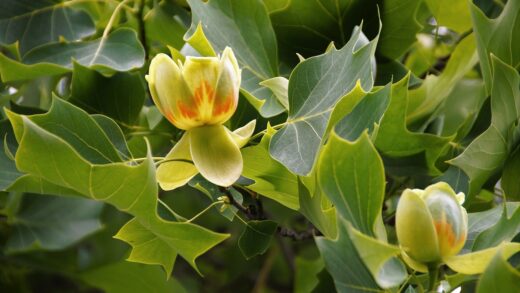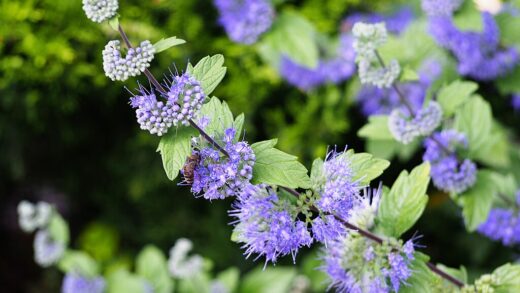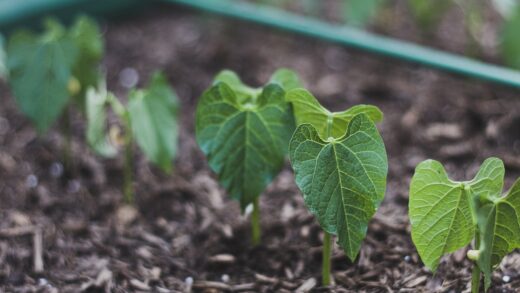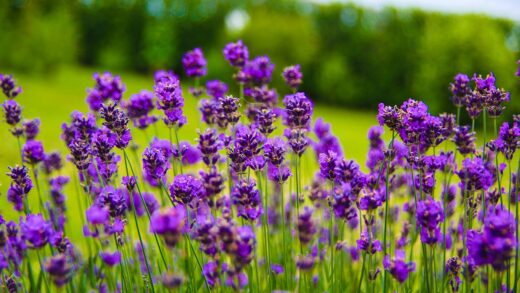Providing the appropriate amount of sunlight is one of the most fundamental and non-negotiable requirements for successfully cultivating the Banat peony and ensuring it produces its famously spectacular, albeit fleeting, floral display. This plant is a true sun-worshipper, a characteristic directly inherited from its native habitat in the open, sun-drenched grasslands and forest edges of the Pannonian Basin. Insufficient light is the most common reason for a healthy-looking peony to fail to bloom, making the selection of a proper planting site a decision of paramount importance. Understanding the nuances of its light needs is the key to unlocking its full flowering potential.
To thrive and flower profusely, the Banat peony requires a location that receives a minimum of six to eight hours of direct, unfiltered sunlight each day. More sun is generally better, and a full day of sun from morning until late afternoon is the ideal scenario. The energy captured through photosynthesis during these long hours of direct sun exposure is what fuels the development of the strong stems, healthy foliage, and, most critically, the numerous flower buds that will erupt in spring. A plant situated in a location with less than six hours of direct sun may survive and produce healthy green leaves, but it will likely produce very few, if any, flowers, a source of great frustration for many gardeners.
The ideal location: full sun exposure
When selecting a site for your Banat peony, the primary consideration must be the quantity and quality of sunlight it will receive throughout the day. An open area, far from the shade cast by buildings, fences, or large trees, is the best choice. Morning sun is particularly beneficial, as it helps to quickly dry any dew or rain from the foliage, reducing the risk of common fungal diseases like botrytis blight and powdery mildew, which thrive in damp conditions. A location with an eastern or southern exposure is often perfect, as it captures the intense morning and midday sun.
It is important to consider how the light in your garden changes throughout the seasons. A spot that is sunny in the early spring when trees have not yet leafed out may become progressively shadier as the season wears on. Since the peony sets its flower buds for the following year during the summer and autumn, it requires ample sun exposure throughout this entire period, not just during its spring flowering time. Before planting, observe your chosen spot for a full day, or even over several weeks, to get an accurate understanding of the sunlight it receives. This careful initial assessment can prevent the disappointment of a flowerless plant and the difficult task of having to transplant a poorly sited peony later on.
While full sun is the mantra for peony cultivation, in extremely hot climates (such as USDA zones 8 and above), a little protection from the most intense, scorching afternoon sun can be beneficial. In these regions, a location that receives direct morning sun and then some light, dappled shade during the hottest part of the afternoon can help prevent the foliage from scorching and reduce water stress on the plant. However, this is the exception rather than the rule. For the vast majority of temperate climates, maximizing direct sun exposure is the key to success.
More articles on this topic
If your established Banat peony is failing to bloom despite being otherwise healthy, the first factor to investigate is almost always insufficient light. Over time, surrounding trees and shrubs can grow larger, gradually encroaching on the peony’s sunlight. What was once a full-sun location may have become a partial-shade location over the years. In such cases, the only remedies are to either prune the competing trees and shrubs to allow more light to reach the peony or to undertake the challenging task of moving the peony to a sunnier spot in the garden during the autumn dormancy period.
The consequences of inadequate light
The most significant and frustrating consequence of inadequate sunlight for a Banat peony is a complete lack of flowers. The plant may produce a lush and beautiful mound of deep green foliage, appearing perfectly healthy to the untrained eye. However, without sufficient solar energy, it simply cannot muster the resources required to initiate and develop flower buds. The plant will channel all its limited energy into vegetative growth, creating leaves to try and capture more light, but the reproductive cycle will be halted. This is why a peony that once bloomed beautifully may cease to do so if a nearby tree grows and casts a new shadow over it.
In addition to the lack of flowers, peonies grown in too much shade are often structurally weaker. The stems may become elongated and spindly as they stretch towards the available light, a phenomenon known as etiolation. These weakened stems are less capable of supporting the weight of the foliage and are much more likely to flop over, especially after a rain. The overall form of the plant will be less compact and robust than a specimen grown in full sun, appearing more open and leggy.
Furthermore, a location with insufficient light often goes hand-in-hand with poor air circulation. Shady spots, especially those under trees or near buildings, tend to have more stagnant air. This, combined with the fact that the foliage will take much longer to dry after rain or morning dew, creates the perfect breeding ground for fungal diseases. A shade-grown peony is significantly more susceptible to severe and recurring infections of botrytis blight and powdery mildew. The plant is not only failing to perform its primary function of flowering but is also under constant threat from pathogens.
More articles on this topic
Over time, a Banat peony that is chronically deprived of light will begin to decline in overall vigor. While it may survive for several years in a shady spot, it will not thrive. The root system will not develop as robustly, and the plant will have fewer energy reserves stored for the winter. Each year, it may emerge with slightly less vigor than the last, eventually becoming a weak and struggling plant. Sunlight is the fundamental source of energy for the peony, and without an adequate supply, all other aspects of its health will inevitably suffer.
Light and disease prevention
The relationship between sunlight and disease prevention in peonies is direct and critically important. As mentioned, the most common diseases, such as botrytis blight and powdery mildew, are caused by fungi that thrive in moist, humid environments. A location in full sun provides two powerful, natural defenses against these pathogens. Firstly, the direct rays of the sun help to quickly evaporate moisture from the plant’s leaves and stems after rainfall or in the morning. This drastically reduces the amount of time that the fungal spores have the moist conditions they need to germinate and infect the plant tissue.
Secondly, a sunny location is typically an open location with better air circulation. The gentle movement of air through the foliage also aids in the rapid drying of the plant’s surfaces. In a shady, still corner of the garden, the leaves can remain wet for many hours, creating an ideal incubation environment for disease. By simply placing the peony in a sunny and airy spot, you have already implemented the most effective preventative fungicide treatment available—a natural one that works continuously throughout the growing season.
The ultraviolet (UV) radiation present in direct sunlight also has a sanitizing effect, helping to kill some fungal spores and bacteria on the leaf surfaces. While this is a secondary benefit, it contributes to the overall healthier environment provided by a full-sun location. A plant that is constantly fighting off fungal infections will divert energy away from growth and flowering, so preventing these diseases in the first place is a key component of promoting a prolific bloom.
Therefore, when you are choosing a site for your Banat peony, you should think of sunlight not just as fuel for flowering but also as a protective shield. The same rays that power photosynthesis are also working to keep the foliage dry and suppress the development of harmful pathogens. This synergy between light, flowering, and plant health is why horticultural experts are so insistent that full sun is a non-negotiable requirement for growing beautiful, healthy peonies.
Adapting to different garden situations
While the ideal of six to eight hours of full, direct sun is the goal, gardeners must often work with the conditions they have. If your garden does not have a location that meets this perfect standard, you need to find the sunniest possible spot available. Prioritize morning sun over afternoon sun if you have to choose, as the benefits of drying the morning dew are significant for disease prevention. A location that gets intense sun from 8 a.m. to 3 p.m., for example, is far superior to one that is shaded in the morning and only gets sun from 2 p.m. onwards.
In gardens with unavoidable dappled light or partial shade, it is even more critical to focus on other aspects of care to compensate. Ensure that air circulation is as good as it can possibly be by giving the peony ample space and pruning any nearby shrubs. Be absolutely meticulous about autumn sanitation, removing every last piece of foliage to reduce disease pressure. You may have to accept a reduced number of flowers, but by optimizing all other growing conditions, you can still cultivate a reasonably healthy plant.
If you are determined to grow a Banat peony but lack a suitable in-ground location, container gardening can offer a solution. By planting the peony in a large container, you gain the flexibility to move it to capitalize on the sunniest parts of your property. You can place it on a sunny patio or deck where it will receive the light it needs. This approach requires more attentive watering and a specific overwintering strategy, but it allows you to provide the necessary sunlight even in a garden that is otherwise too shady.
Ultimately, you cannot change the fundamental nature of the plant. The Banat peony has evolved over millennia to thrive in sun-drenched environments, and its light requirements are deeply ingrained in its biology. Attempting to grow it in significant shade is a recipe for disappointment. The most successful peony gardeners are those who recognize this essential need and either have or create a suitable, sunny home where this magnificent plant can truly flourish and perform to its full potential.


















